From Cutting to Forming: The Complete Guide to Modern Metalworking Methods
Modern metalworking is a fascinating and ever-evolving field that encompasses a wide range of techniques and technologies used to manipulate metals. These processes enable industries ranging from automotive and aerospace to construction and medical devices to produce high-quality, durable parts and products.
The metalworking process can be broadly categorised into two main groups: cutting and forming. Each of these categories involves various techniques that play a vital role in shaping metal materials into finished products.
In this guide, we will explore the essential methods and innovations in both cutting and forming, highlight their importance, and offer insights into how industries use them today.
The Cutting Process: Precision and Efficiency
Cutting is one of the most fundamental operations in metalworking. It involves removing material from a workpiece to achieve a desired shape or size. The cutting process is vital because it allows manufacturers to work with a wide range of metal types and thicknesses, cutting them into the necessary dimensions for further processing or assembly. There are several different methods of cutting used in the metalworking industry, each with its unique applications and benefits.
Shearing
Shearing is a simple yet effective cutting method that uses a pair of blades to cut through metal, typically in a straight line. Manufacturers most commonly use this process for thin sheet metals, providing a fast and efficient way to produce uniform pieces. They perform the process at room temperature, meaning no significant heat is generated during the cutting operation. Shearing is a cost-effective option for high-volume production but may not be suitable for thicker materials.

Laser Cutting
Laser cutting is one of the most advanced and accurate methods for cutting metals. In this process, a high-powered laser beam is directed onto the metal, heating the material until it melts or vaporises. The laser cutter uses a precise, focused beam that enables very fine and intricate cuts, making it ideal for complex shapes and designs.
Laser cutting is used for a wide range of materials, including stainless steel, aluminium, and titanium. While the setup cost of laser cutting equipment can be high, its precision and ability to cut through a variety of materials make it a valuable tool in modern metalworking.
Waterjet Cutting
Waterjet cutting uses a high-pressure stream of water, often mixed with abrasives, to cut through metal. This method can cut through almost any material, including metals, plastics, ceramics, and composites.
Waterjet cutting is a cold cutting process, meaning it doesn’t generate heat, so there’s minimal risk of altering the material properties. Waterjet cutting is particularly useful for materials sensitive to heat or materials that are difficult to cut using traditional methods.
CNC Machining
Computer Numerical Control or CNC machining is a highly automated method that uses pre-programmed software to control the movement of cutting tools. It is used for precision cutting, drilling, milling, and turning operations. CNC machining is a highly versatile method that can produce complex shapes with a high degree of accuracy. It is commonly used in industries like aerospace, automotive, and medical device manufacturing, where precision and repeatability are crucial.
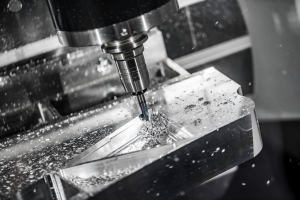
The Forming Process: Shaping and Moulding Metal
Forming processes, unlike cutting, involve reshaping metal without removing material. These techniques generally use force, heat, or both to change the metal’s shape, creating parts with improved structural integrity and functionality. Manufacturers use forming methods to produce parts like metal sheets, tubes, and even complex automotive components.
Stamping
Stamping is a high-speed process that forms metal into flat sheets, typically in large quantities. Manufacturers place the metal sheet into a die, and a punch stamps the desired shape. This process includes operations like punching, blanking, and embossing.
Industries that require high-volume production of parts, such as the automotive industry, extensively use stamping to create body panels, brackets, and other components.
Deep Drawing
Deep drawing is a technique used to create hollow parts by pulling a metal sheet into a die using a punch. The process is particularly useful for creating cylindrical or cup-shaped parts, such as beverage cans or automotive fuel tanks. Manufacturers stretch the metal, increasing the material’s thickness. This process works best with ductile metals like aluminium and mild steel.
Extrusion
Extrusion is a process that involves pushing a heated metal billet through a die to create a continuous profile with a uniform cross-section. The extrusion process commonly creates pipes, rods, and profiles of different shapes. Manufacturers often use aluminium and steel in this process. After extrusion, they cut the parts to length, and industries like construction, automotive, and aerospace frequently use them.
Forging
Forging involves shaping metal using compressive forces, typically by hammering or pressing. This process improves the strength and structure of the metal, making it more durable. There are two main types of forging: open-die forging and closed-die forging. Manufacturers use open-die forging for larger, less complex shapes, while they use closed-die forging for precision parts with intricate details. Industries widely use forging in aerospace, automotive, and heavy machinery manufacturing.
Read in detail regarding the Advantages of Metal Presswork in Automotive and Industrial Manufacturing
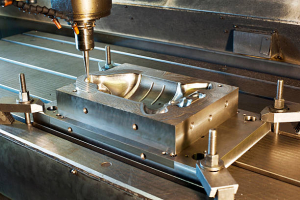
Rolling
In rolling, metal passes through one or more pairs of rolls to reduce its thickness and shape it into sheets, strips, or coils. Manufacturers commonly use this method to produce flat metal products, typically at elevated temperatures (hot rolling) or at room temperature (cold rolling).
Hot rolling enables greater thickness reductions and is often used to produce structural components, while cold rolling produces smoother finishes and more precise tolerances.
The Role of Automation in Modern Metalworking
As metalworking techniques have evolved, automation has become increasingly integral to these processes. The use of Computer Numerical Control (CNC) machines, robotic arms, and automated inspection systems has improved production efficiency, quality, and consistency. CNC machining, for example, allows manufacturers to produce highly detailed parts with tight tolerances, all controlled by sophisticated software.
Automation also plays a key role in optimising workflows, reducing labour costs, and minimising human error. In many industries, robots handle tasks like material loading and unloading, part inspection, and even the assembly of finished products. Read in more detail about industrial automation, how it works, and its types.
The integration of Artificial Intelligence (AI) and machine learning is further enhancing the capabilities of metalworking processes by predicting maintenance needs and optimising production cycles.
Kirmell Services: Advancing Metalworking Solutions
At Kirmell Ltd, we specialize in providing top-tier metalworking services, including cutting and forming solutions tailored to the specific needs of our clients. Whether you need precise welding, custom fabrication, or specialized metal forming services, Kirmell Ltd has the expertise and technology to help you improve precision, speed, and overall efficiency in your operations.
Our commitment to providing cutting-edge solutions extends beyond just the services we offer. We also provide comprehensive consultation services to ensure that our clients fully understand the capabilities of modern metalworking technologies and how they can optimise their operations. Contact us for more information in this regard.
Conclusion
From cutting to forming, modern metalworking encompasses a wide array of techniques that are vital to producing high-quality metal parts and products. As industries continue to demand greater precision and efficiency, these methods will continue to evolve, with automation and advanced technologies playing a key role in driving these changes.
Whether you’re working with sheet metal or more complex materials, the variety of methods available ensures that there is a suitable solution for every challenge.
For businesses looking to stay ahead in the world of modern metalworking, partnering with experts like Kirmell Ltd can make all the difference in achieving success.
FAQs
What is the difference between cutting and forming in metalworking?
What are the benefits of laser cutting over traditional cutting methods?
How does CNC machining improve precision in metalworking?
What metals are suitable for laser cutting?
How does forging improve the strength of metal parts?

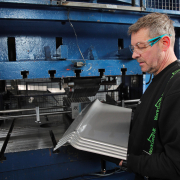
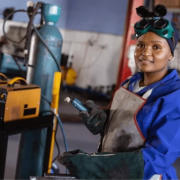
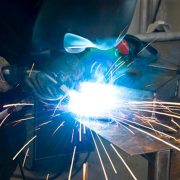
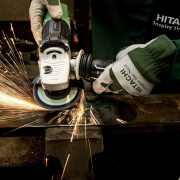
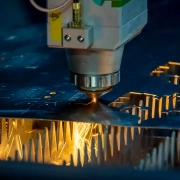
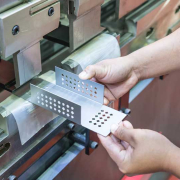
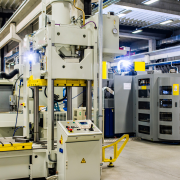
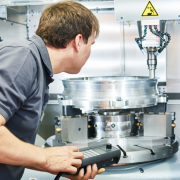



Leave a Reply
Want to join the discussion?Feel free to contribute!